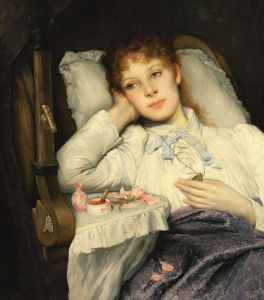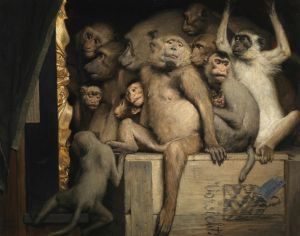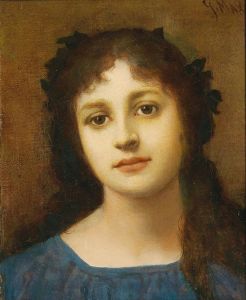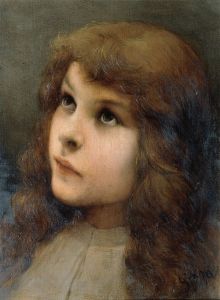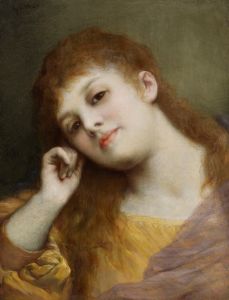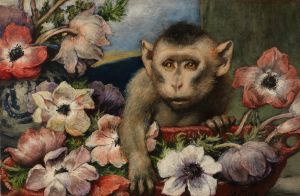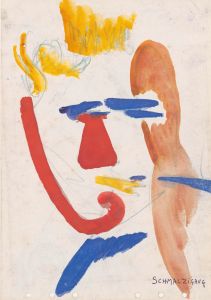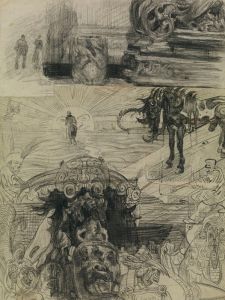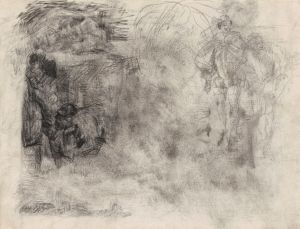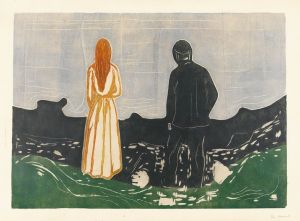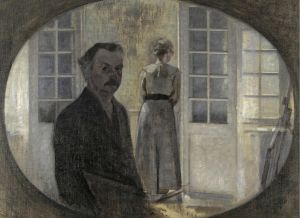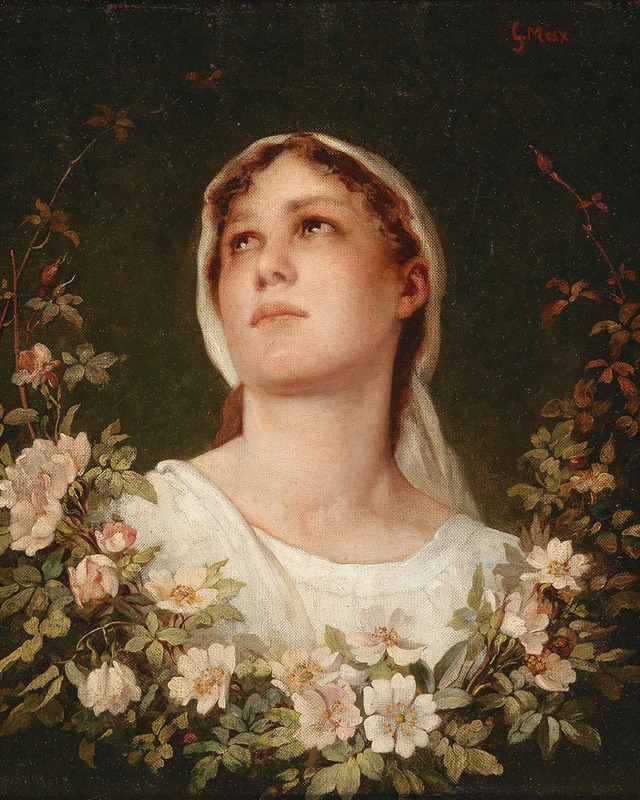
Daydreaming
A hand-painted replica of Gabriel von Max’s masterpiece Daydreaming, meticulously crafted by professional artists to capture the true essence of the original. Each piece is created with museum-quality canvas and rare mineral pigments, carefully painted by experienced artists with delicate brushstrokes and rich, layered colors to perfectly recreate the texture of the original artwork. Unlike machine-printed reproductions, this hand-painted version brings the painting to life, infused with the artist’s emotions and skill in every stroke. Whether for personal collection or home decoration, it instantly elevates the artistic atmosphere of any space.
Gabriel von Max was a notable 19th-century Austrian painter known for his works that often explored themes of spirituality, mysticism, and the human condition. One of his intriguing paintings is "Daydreaming," which reflects his interest in the psychological and emotional states of his subjects.
"Daydreaming" is a fine example of von Max's ability to capture the introspective and contemplative nature of his subjects. The painting depicts a young woman lost in thought, her expression serene yet distant, suggesting a deep engagement with her inner world. This portrayal aligns with the broader artistic movement of the time, which often emphasized the exploration of the human psyche and the complexities of emotion.
Von Max was part of the Munich School, a group of artists who were known for their detailed and realistic style. His works often featured a high level of detail and a soft, almost ethereal quality, which can be seen in "Daydreaming." The use of light and shadow in the painting is particularly noteworthy, as it adds depth and dimension to the subject, enhancing the overall mood of introspection.
The artist's interest in science and the occult is also reflected in his works. Von Max was known to have a fascination with spiritualism and the paranormal, which often influenced his art. While "Daydreaming" does not explicitly depict these themes, the contemplative nature of the subject can be seen as a subtle nod to the exploration of the unknown and the unseen aspects of human consciousness.
Gabriel von Max's paintings often featured women as central figures, and "Daydreaming" is no exception. His portrayal of women was typically characterized by a sense of dignity and introspection, challenging the often superficial depictions of women in art during that era. This focus on the inner life of his subjects was a hallmark of von Max's work and contributed to his reputation as an artist who delved beneath the surface to reveal deeper truths.
The painting is also a reflection of the broader cultural and intellectual currents of the late 19th century, a time when there was a growing interest in psychology and the workings of the mind. This period saw the emergence of figures like Sigmund Freud, whose theories on the unconscious mind would later revolutionize the understanding of human behavior. In this context, "Daydreaming" can be seen as part of a larger artistic and intellectual movement that sought to explore the complexities of human thought and emotion.
In summary, "Daydreaming" by Gabriel von Max is a compelling work that captures the essence of introspection and the exploration of the human psyche. Through his detailed and thoughtful portrayal of his subject, von Max invites viewers to reflect on the nature of thought and the mysteries of the mind. His work remains a testament to the rich interplay between art, science, and spirituality that characterized the late 19th century.







